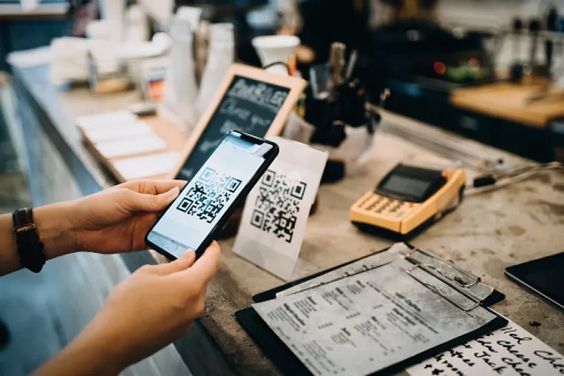Revolutionizing Restaurant Experiences with Digital Menus
The restaurant industry is ever-evolving, and keeping up with the latest trends is crucial for staying competitive. One of the most impactful innovations in recent years is the digital menu. This modern solution not only enhances the dining experience for customers but also provides significant benefits for restaurant owners and managers.
The Rise of Digital Menus
The traditional paper menu has long been a staple in the restaurant industry, but it comes with its own set of limitations. Updating a paper menu is a costly and time-consuming process, and it often leads to errors and inconsistencies. Enter the digital menu, a game-changer that addresses these issues and offers a host of additional advantages.

Advantages for Customers
1. Convenience and Accessibility: Digital menus are easily accessible via smartphones, tablets, and other digital devices. This means customers can view the menu before arriving at the restaurant, helping them make informed choices and reducing wait times.
2. Interactive and Engaging: Digital menus can include high-quality images, videos, and detailed descriptions of dishes, making the dining experience more interactive and engaging. This visual appeal can enhance the overall customer experience and increase their likelihood of returning.
3. Real-Time Updates: With a digital menu, any changes in the menu, such as new dishes or updated prices, can be made in real-time. This ensures that customers always have access to the most up-to-date information, reducing confusion and enhancing satisfaction.
Advantages for Restaurant Owners and Managers

1. Cost-Effective: Updating a paper menu can be expensive and time-consuming. Digital menus, on the other hand, can be updated instantly and at no additional cost. This not only saves money but also allows for more frequent updates, keeping the menu fresh and exciting.
2. Enhanced Marketing Opportunities: Digital menus can be integrated with social media platforms and other marketing tools, providing restaurants with new opportunities to promote their dishes and attract new customers. Special promotions, events, and seasonal offerings can be highlighted effectively.
3. Improved Operational Efficiency: Digital menus can streamline the ordering process, reducing the likelihood of errors and improving overall efficiency. This leads to faster service, increased table turnover, and higher customer satisfaction.
Implementing a Digital Menu in Your Restaurant
Transitioning to a digital menu may seem daunting, but the process can be straightforward with the right approach. Here are some steps to get started:
1. Choose the Right Platform
Selecting the right digital menu platform is crucial. Look for a service that offers a user-friendly interface, customizable design options, and robust customer support. Ensure that the platform is mobile-responsive and can be easily accessed on various devices.
2. Design an Engaging Menu
A well-designed digital menu should be visually appealing and easy to navigate. Use high-quality images and detailed descriptions to showcase your dishes. Consider incorporating interactive elements, such as videos and customer reviews, to enhance engagement.
3. Integrate with Your POS System
Integrating your digital menu with your Point of Sale (POS) system can streamline operations and improve accuracy. This integration allows for real-time updates and seamless order processing, reducing the risk of errors and improving efficiency.
4. Train Your Staff
Ensure that your staff is well-trained in using the digital menu system. Provide comprehensive training sessions and ongoing support to help them become comfortable with the new technology. Encourage them to assist customers with any questions or issues they may have.
5. Promote Your Digital Menu
Once your digital menu is up and running, promote it through your website, social media channels, and in-restaurant signage. Encourage customers to use the digital menu and provide feedback to help you continually improve the system.
The Future of Digital Menus
As technology continues to advance, the possibilities for digital menus are endless. Here are some trends to watch for in the coming years:
1. Augmented Reality (AR):
AR technology can take the digital menu experience to the next level by allowing customers to see virtual representations of dishes before ordering. This can enhance the dining experience and help customers make more informed choices.
2. AI-Powered Recommendations:
Artificial Intelligence (AI) can analyze customer preferences and behavior to provide personalized menu recommendations. This can improve customer satisfaction and increase sales by suggesting dishes that customers are likely to enjoy.
3. Integration with Smart Devices:
As smart devices become more prevalent, digital menus can integrate with technologies like voice assistants and smartwatches. This can provide customers with even more convenient ways to interact with the menu and place orders.
Conclusion
The digital menu is revolutionizing the restaurant industry by offering numerous benefits for both customers and restaurant owners. From increased convenience and engagement to cost savings and operational efficiency, the advantages are clear. By embracing this technology, restaurants can stay ahead of the competition and provide a superior dining experience.
